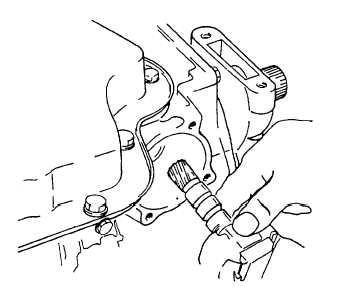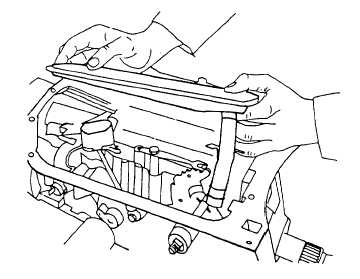
Figure 7-23. - Removing the governor assembly.
TRANSMISSION OVERHAUL. - Because of the complexity of automatic transmissions, the need for special tools, and personnel skills, overhauling these major components is usually done at a Construction Equipment Department located at a Construction Battalion Center. Overhaul of automatic transmissions is not a job for an inexperienced person. If the job must be performed in the field, it is recommended that only a highly capable mechanic be assigned to this type of work NCIC, Port Hueneme, Calif., and NCTC, Gulfport, Miss., both offer training in automatic transmission overhaul as part of the 12 week CM-C-1 advance course.
The following disassembly instructions apply to the General Motors Turbo Hydra-Matic Model 400 series automatic transmission. This type of transmission is commonly found in CESE throughout the NCF and in

Figure 7-24. - Removing the filter assembly.
many public works stations. It is likely to be in manufacture for years to come.
Before preceding with automatic transmission disassemble y or reassembly, get the applicable repair instructions and have them on hand. READ THIS INFORMATION !!!!! Incorrect disassembly procedures can lead to severe parts damage, causing unnecessary equipment downtime. Have a workplace away from the main CM shop. A dust-free air-conditioned room is the best, but this is not always available. Obtain the cleanest work space possible! Have on hand any special tools needed for the job, such as snap ring pliers, torque wrenches, or special pullers. It is also a good idea to have an air compressor available for test purposes and for blowdrying individual parts.
CAUTION
Compressed air used for cleaning purposes should not exceed 30 psi. Wear goggles and other appropriate protective equipment when you use compressed air.
Clean the outside of the transmission and drain out as much fluid as possible. Remove the torque converter and set it aside for separate cleaning and testing. Place the transmission on the workbench and remove the governor (fig. 7-23). Next, remove the oil pan, oil filter, and intake pipe (fig. 7-24). The type of debris found in the bottom of the oil pan is indicative of the type of internal damage you may find in the transmission. Remove the vacuum modulator and valve (fig. 7-25);

Figure 7-25. - Removing the vacuum modulator.
Continue Reading